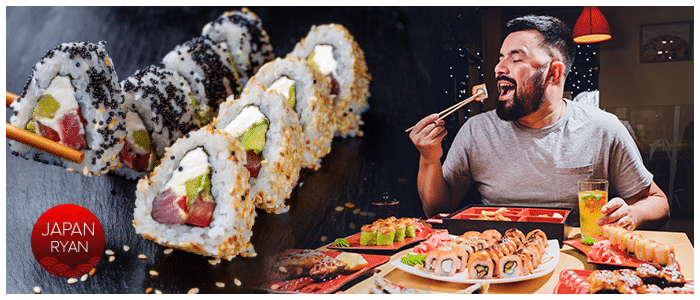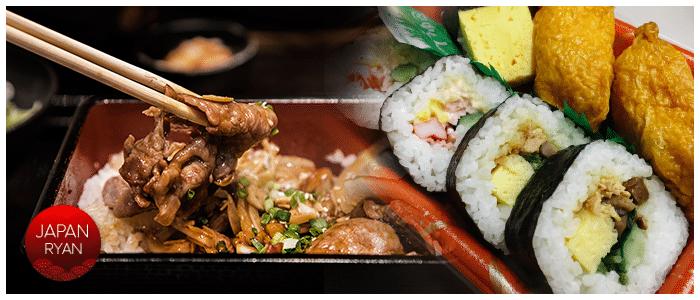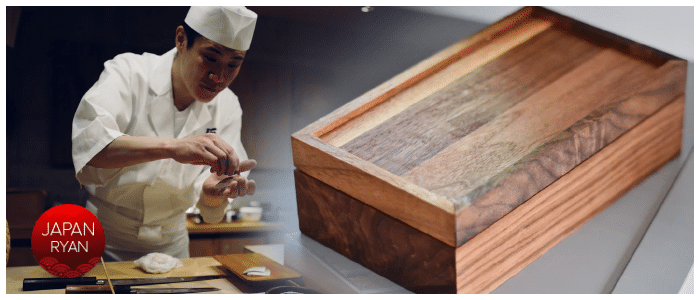
This is the ultimate guide to convenience store bento boxes! A bento from a convenience store, like 7-11, Family Mart, or Lawson, is a great way to have a fast, instant lunch ready for you immediately.
What’s bento?

A bento is a pre-made boxed meal meant for one that is usually made of staple carbs (almost always rice, sometimes noodles), along with a main dish of meat or fish and an assortment of pickled or cooked vegetables. The ingredients may change, leaving out the meat or fish if you’re a vegetarian for example. The word supposedly comes from the an old slang term in Chinese Biandang, which means convenient. Since the 13th century, it has become a symbol of Japanese’s efficient culture and its ideals. The balanced nutrition and portability is excellent for school children and the salarymen alike. It’s almost like what you imagine a lunch box to be in the US, and is great for an afternoon snack. Mainly, it’s all about convenience.
What’s a convenience store?
The conbini is more than just an occasional drop-by like you might think of a Walgreens; it’s a staple of every day life in Japan, and you will not go a week without visiting one if you’re living in Tokyo. They sell snacks, sake, whiskey, beer, slushies, fried foods, and more. It’s a truly Japanese institution combining efficiency with cost-effectiveness to make a one-stop-shop that you must visit every day.
Most convenience stores even have more, with photocopy machines, banking and ATM services, and clean restrooms too.
How do these things meet?
Often Japanese business people – called “salarymen” – don’t get very much time for lunch. While they technically might have a full hour off for lunch, it can look like you are lazy if other employees have come back before you. The bento offers a quick option. You can take it anywhere and eat quickly, with little to no preparation.
History of the Bento Box

The word “bento” was not what it was initially called – just like a “lunch box” was probably not always a “lunch box”. From 1100-1300 AD, approximately, they simply were referred to as “dried meal” ie hoshii. It had dried rice that could be boiled in water or eaten as-is. Later in the 1500s boxes were added.
During the Kamakura Period there were no boxes, but in 1568 (the Azuchi-Momoyama period) wooden lacquered boxes were produced to create the idea of a bento box that we know today.
During the Edo period, which was a very stable time of economic growth in Japan, from 1603-1867, the bento became an everyday meal to Japan’s booming population, with contents and serving style varying depending on social class and occupation. Travelers and sightseers would wear koshibento (waist bento), which often included riceballs wrapped in bamboo leaves. These were cheap and quick to eat. For special events such as the hanami matsuri (flower viewing parties), large, multi-layered bentos were made to eat at the festival.
In the twentieth century, cheaper and lighter aluminum began to be used in producing bento boxes, which paved the way for the microwavable conbini bento (convenience store bento), ekiben (train station bento) and hokaben (take-out bento). If you want to keep learning Japanese words, start with the beginners lesson.
Where to buy a bento in Japan.
You can buy a bento box from a convenience store, from a shop at the train station, or even from a dedicated “benya” or bento-shop. This is called an Ekiben.
In addition to train stations, nearly every major department store (depato) has a food-basement! The food-basement often has snacks, bentos, and sometimes even a full grocery store. The options are often more expensive than your local discount supermarket, but they make up for it in quality.
Bentos to avoid in Japan.
Most of the bento boxes you will find in Japan are going to be fresh and delicious. But be careful as you don’t always know the ingredients. A person who has allergies or special dietary restrictions should not consume any random bento box.
I also suggest avoiding certain bento boxes that contain foods that are excessively smelly or weird-tasting. I personally don’t like mackerel and I don’t like Natto either. These bento boxes will make travel companions unhappy as you can make a whole train car smell by eating them, which is considered rude in Japan even in the shinkansen where you have individual seats.
Bento at the Train Station in Japan
Are you leaving Tokyo on a long trip by bullet train (Shinkansen) and leaving from Tokyo Station? You can find a ton of incredible bento options in Tokyo Station. You can also find these options at some of the busier stations; chiefly those that have major bullet train stops, because bentos are a convenient travelling meal when taking a 3 or 4 hour train ride to a distant point in Japan.
Ekibenya is one of the stores at Tokyo Station that has bento boxes. Eki means “shrimp” and ya can mean “store”, making the name of this store “shrimp-bento-store”. What a convenient and easy naming system! You can also buy bentos from the convenience store in the station or from Daimaru.
Bento at the Convenience Store in Japan
Convenience stores are ubiquitous in Japan for selling essentially everything you could need, and bento boxes are no exception. Many Japanese businesspeople have short lunches, and so a lunch that is fast and easy is super convenient. The convenience stores are also reliably known for quality. There have not been many cases of food poisonings from the food due to the high standards set by these stores for cleanliness and freshness. Most stores receive shipments of fresh products several times each day. You shouldn’t be surprised if you stop into a convenience store and notice the employees stocking fresh products onto the shelves while you are there.